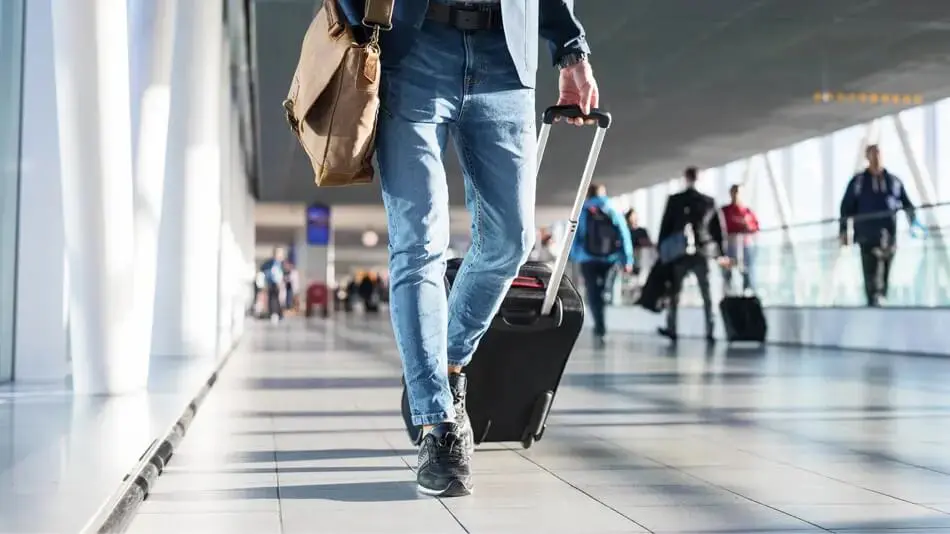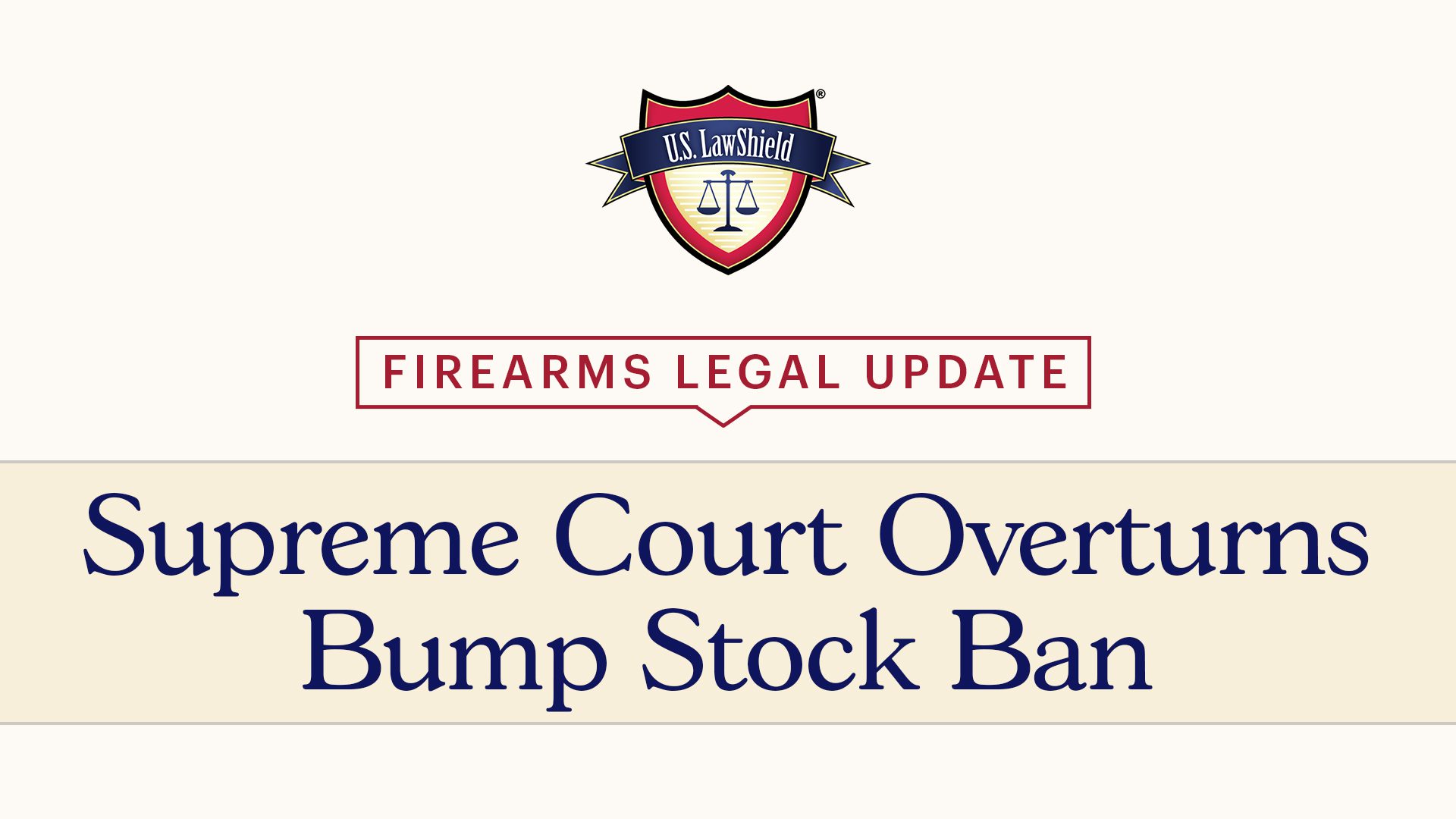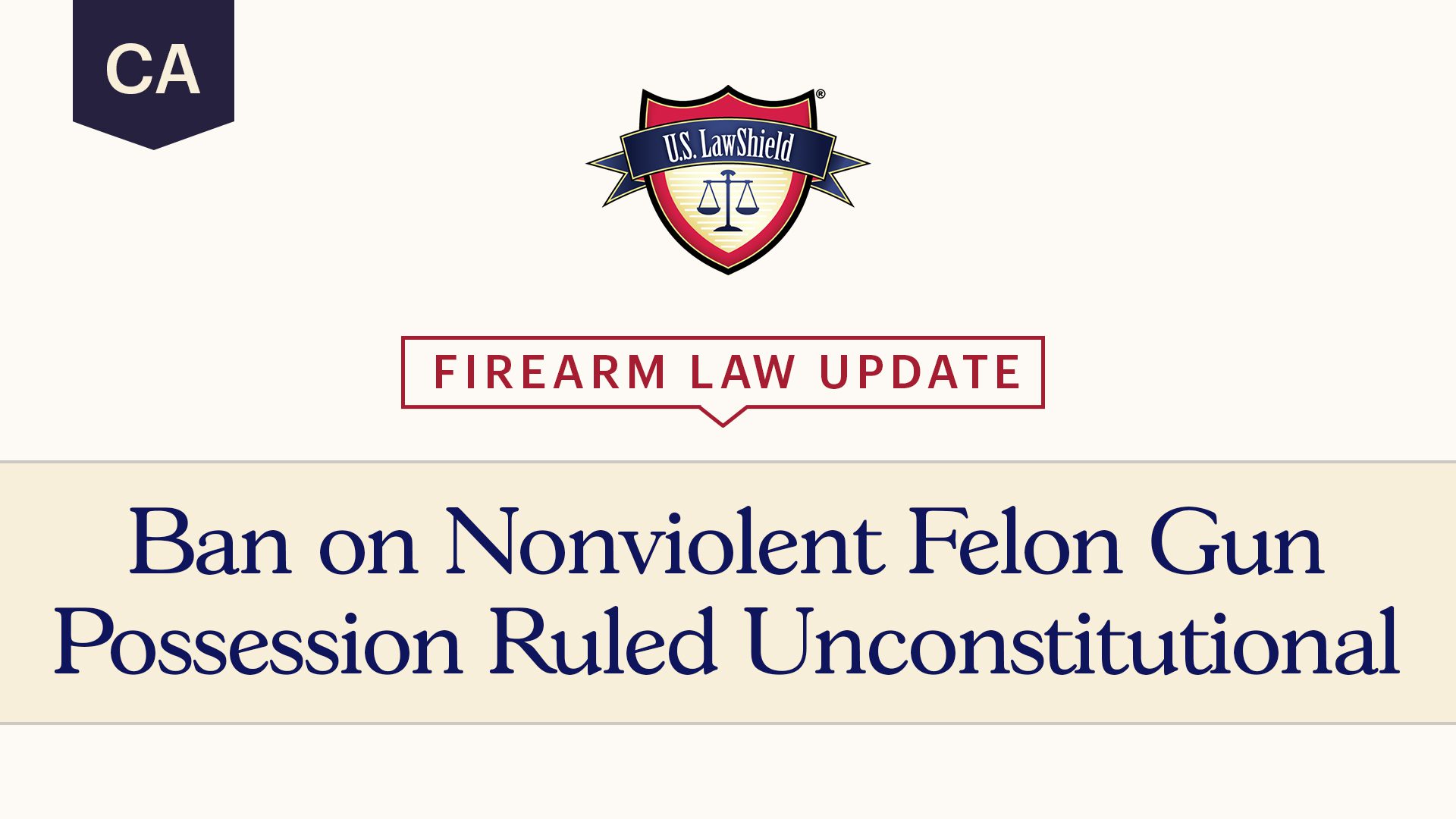
Whether you’re a brand-new gun owner or have been around firearms your entire life, it’s important to remember there are very specific rules to follow when it comes to flying with a gun. While this may seem like common sense to some, evidence suggests quite a few people haven’t gotten the memo, given how frequently the Transportation Security Administration (TSA) discovers firearms and other restricted items in passengers’ carry-on bags. If you intend to fly with a gun, you need to familiarize yourself with the rules and regulations regarding traveling with a firearm.
Can I Fly with My Gun?
The frequency with which people–often times unknowingly–bring guns to TSA security highlights a significant issue: some people are failing to keep track of their guns when traveling. And while this article focuses specifically on flying with firearms, the TSA finds all sorts of strange things at security checkpoints, including a python in a hard drive, fake bombs, an inert mortar round, wedding-themed fake hand grenades, and a live cat.
While these incidents seem to defy common sense, it underscores a point Psychology Today made nearly a decade ago that “Common Sense Is Neither Common nor Sense.” With that in mind, it’s a good idea to become familiar with the rules of traveling by air with a firearm. Here are a few do's and don'ts to flying with guns to help make your travels safe and law-abiding.
Enjoying this content? Find out how you can get more essential updates and self-defense information just like this sent straight to your inbox.
What Are the TSA Rules of Flying with Firearms?
"You may transport unloaded firearms in a locked hard-sided container as checked baggage only. Declare the firearm and/or ammunition to the airline with your other checked bags at the ticket counter. The container must completely secure the firearm and prevent it from being accessed. Locked cases that can be easily opened are not permitted. Be aware that the container the firearm was in when purchased may not adequately secure the firearm when it is transported in checked baggage."
This means if you’re going to travel with a firearm, it must be in a hard-sided case that you can lock. If the gun case you happen to be securing your firearm in is small enough to fit inside a larger, soft-sided checked bag, just make sure you declare it at the ticket counter. It’s also important to remember that any firearm parts aside from rifle scopes are prohibited in carry-on bags and need to be checked. What about inert training aids, like airsoft guns, SIRT pistols, or Blueguns®? You need to check those as well! Although, it’s a bit unclear as to whether you need to declare their presence at check-in. When in doubt, verify with your airline. Each airline has different regulations regarding flying with a gun.
You should also note that TSA has very specific guidelines for flying with any type of defensive spray; all sprays are prohibited from being packed for a flight in any baggage other than checked bags. Confusing the issue even more is the fact that many airlines may have their own limitations and procedures to follow when traveling with firearms in addition to federal TSA regulations. Whether you plan on flying with firearms or some other defensive tool, check the regulations for both TSA and the airline you'll be flying with.
Can I Be Armed on an Airplane?
Generally speaking, no, you can’t be armed with a firearm while on an airplane. The only people who may qualify to carry firearms on planes are:
- Members of law enforcement who have passed the TSA Law Enforcement Officer Flying Armed Training Course
- Trained, authorized air marshals
- Pilots and crewmembers of passenger and cargo aircraft who have completed the Federal Flight Deck Officer Program training and been granted authorization to do so.
What Kind of Firearms Case Should I Use for Traveling on Airplanes?
There are certain things TSA looks for when it comes to the case you pack your gun in for a flight. The TSA's website is rather scarce on details regarding what type of case to pack your gun in, but simply states that firearms must be locked in a hard-sided container and only the passenger should retain the key or combination to the lock unless TSA personnel request the key to open the firearm container to ensure compliance with TSA regulations.
However, there's more to traveling with guns than throwing them into a hard-sided case and checking in the bag. In the experience of many gun industry professionals who regularly traveling with firearms, it's a good idea to look for the following features in the gun case you intend to use for flying:
- Not just any solid case; gun cases that are specifically designed to secure firearms during transport
- A hard-sided gun case sturdy enough to maintain its shape even with a heavy weight on top of it
- Key-locking padlocks with short shanks
- Padlocks in every lock-hole on the gun case
- Padlocks that fit snugly enough a hand can’t fit between the open edges of the gun case if someone tries to put their hand inside the case while the locks are in place (this is also so a gun can’t simply be shaken out of a case)
- Gun cases made to withstand the pressure of the cargo hold on an airplane without damaging the gun itself
- Wheeled gun cases, because they're easier to move
- Extra foam, if need be, to pack the gun or guns snugly enough that they won’t shift or slide during transport
- Waterproof gun case for an added layer of protection from the weather
The bulleted list above includes issues that TSA agents have mentioned when a case with a gun, or guns in it, is being checked. How strict the requirements are when you check a case with guns in it depends on the airline, the specific airport, and the TSA agent who checks the case.
A word on smaller-sized pistol gun cases: this type of case can be used for flights as long as it meets TSA's requirements. However, the small size means they're more easily lost, damaged, or stolen. Consider using a full-sized, hard-sided rifle-length case when flying with a gun, or at least using one of the bigger designs of pistol cases.
There isn’t a list of TSA approved gun cases, meaning all research is up to you. Although the TSA site only mentions the case being a hard-sided case that can be locked, there's far more to it. It's better to go overboard in precautions than be caught at the airport finding out their idea of approved gun cases is nothing like yours.
What Penalties Are There for Mistakes Flying with a Firearm?
Mistakes when flying with a gun can be costly, and you could face both civil and criminal charges. Per TSA on their site: “… local and state governments, and other countries, may have their own rules on firearm possession or transportation. As a result, prohibited items may result in both a TSA civil enforcement action and a criminal enforcement action.” TSA “may impose civil penalties of up to $14,950 per violation per person,” and repeat violations have even higher penalties. Anecdotally, it appears that quite a few of these instances are left to the discretion of responding law enforcement, as well as TSA investigators. Remember, you can’t predict who you’ll be faced with or how well-educated on gun laws they’ll be if there’s an issue related to a gun or case you're traveling with.
When your travel plans include flying with a firearm, take the time to research and educate yourself on the gun-related regulations and laws. Don’t assume an airline or TSA employee will be at all familiar with the rules regarding your gun, or guns, because that’s not always the case. In addition, it's wise to know the gun laws in states you have a layover in or where you might end up stuck if your flight is delayed. You need to understand the potential repercussions of taking possession of your gun when your flight has been diverted to a different state or jurisdiction than planned.
The Do's and Don'ts
Whether you travel by air all of the time or this is your very first flight, it’s important to have a solid plan in place for flying with any type of firearm or self-defense tool so you can avoid problems once you get to the airport. Most issues seem to stem from travelers not being aware of the regulations in place for people flying with guns, ammunition, and other firearms or self-defense accessories. It's crucial to do your own research and familiarize yourself with all the guidelines surrounding the transportation of whichever item(s) you plan to pack. Whether you want to pack a gun, knife, or other self-defense tool, it's your responsibility to know the associated regulations and laws.
One tactic we recommend is to have a separate set of bags and luggage that you use strictly for flying. By keeping an entirely “sterile” set of luggage that is never used for quick trips to the range or as part of your everyday carry (EDC) setup, but only for flights, you’ll remove the possibility of forgetting about a prohibited item in a rarely used pocket of a backpack or bag. This can go for a gun case as well; setting aside a specific case for your gun that's only used for flying can make life simpler in the long run. There's also the simple fact that the gun case foam in whatever case you regularly use for the range might not be cut to fit the gun you travel with. Having a separate case made for flying that's versatile enough to fit a variety of guns and is sturdy and of good enough quality to comply with TSA regulations can be a good idea for gun owners.
If keeping a sterile case and set of bags for your flight isn’t something you’re able to do, make sure you completely empty and inspect each case or bag you plan to travel with before you start packing for your trip. Don't forget to check every nook and cranny of your baggage for easy-to-miss items like rounds of ammunition and other small firearms-related products. If you don't have a sterile set for flights that's never been used to carry your gun or related gear, it's a good idea to go as far as physically shaking your baggage out prior to packing. Following these simple guidelines can help you avoid making a gun-related mistake that lands you in hot water or even on the "no fly" list.
Your Protection Starts Here!
There’s nothing more important than protecting yourself and your family. By joining our community of members, you can count on our self-defense coverage, with meaningful options and benefits that make a real difference.
The information provided herein is solely an overview intended to provide general information and should not be considered legal advice. All rights to this work are reserved. No part of this work may be reproduced or copied in any form or by any means without prior written consent. U.S. LawShield® is a Legal Defense for Self Defense® Program, not a law firm. Membership in the U.S. LawShield Legal Defense for Self Defense Program is not a guarantee of any particular outcome. All legal services are provided by independent third-party program attorneys who are part of the Program. Visit uslawshield.com for terms, conditions, restrictions, and insurance licensing information.
All third-party trademarks referenced herein are the property of their respective owners. The use of third-party trademarks does not indicate any relationship, sponsorship, or endorsement between U.S. LawShield® and the owners of these trademarks. Any reference to third-party trademarks is to identify the corresponding goods and/or services and shall be considered nominative fair use under trademark law.





What are the rules traveling with a firearm on long distance Amtrak trains? At some stations bags can be checked to your destination. However at some stops you take your suitcase onto the train yourself and store it on your car on a special rack. The suitcase is accessible to you at any time.
I am seeing these cases with TSA locks, isn’t this against federal laws to give someone else access to your firearm
Please add info on how to properly carry loaded magazines in checked luggage, and how to transport ammunition.
Thanks for the suggestion.
Yes please
I signed up for the full year last march or April and never received a card. Also I don’t know when I need to renew my coverage. Please let me know what to do.
Bobby, please call member services at 877-448-6839 to update update your coverage.
Thank you for the helpful article! I discovered on a recent holiday flight that certain airlines *cough* American *cough* may add additional requirements not explicitly listed on their policy page. In my instance, it was that there must be a lock in every hole on the hard-case case because they claimed the TSA defined a “secure hard-sided case” as one with locks in every hole. I respectfully pushed back, got management involved, defended that neither the TSA nor the Airline’s own policy page stated this and demonstrated the security of the case in spite of the extra hole, but in the end, the airline would not let me fly. All shops in the airport were out of locks due (as the cashiers confirmed) to the number of flyers having to buy extra locks for their firearms cases. I would advise as a safety precaution to lock every point of the case that can be locked lest you too miss your flight. Happy travels!
Thanks for reading!
What information is asked on the card to declare your firearm at the airport?
Can you fly with a checked bag with an empty clip for a pistol? Without the pistol… magazine only.